In my family, we hardly buy palm oil from the market because we have lots of palm trees from which we get almost all the fruits and then process the palm oil ourselves for preparing different kinds of our native food.
In Nigeria generally, every family uses palm oil for preparing food; it's a must-have ingredient at home when cooking certain food, so either you buy it from the market or process it yourself if you have palm trees.
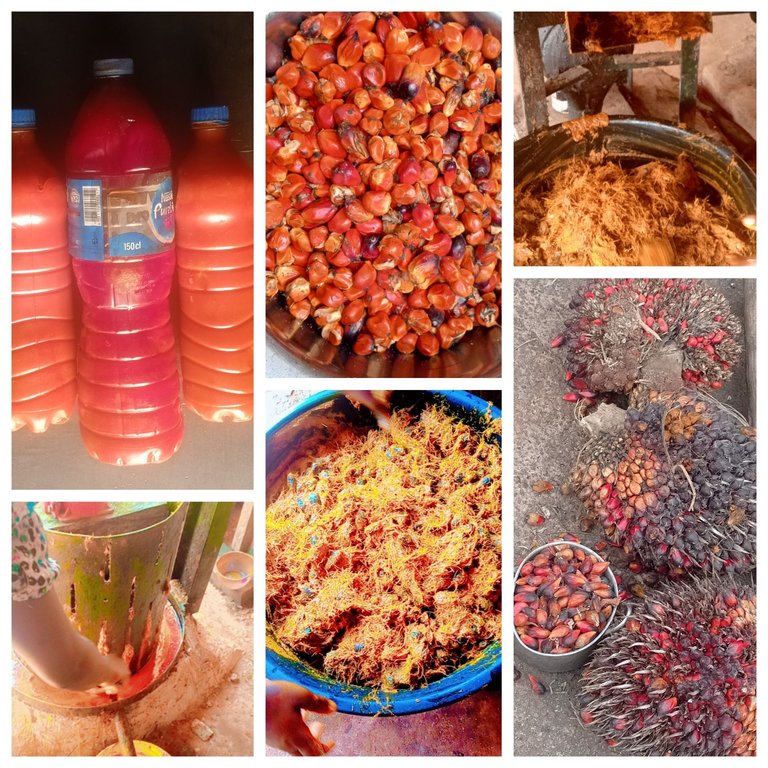
Today, I will take you through the procedures for processing palm oil. Before now, what we normally used was mortar and a pestle to pound the palm fruits after cooking them, but technology has made things easier now. I visited my hometown this last holiday and saw that we now have machines that process palm oil within a few minutes. This palm oil process used to be one of the tedious chores in those days when I was still a teenager in my father's house. I hated being asked to do the work because it will almost take me the whole day and mess up my body with oil, lolz. All thanks to the advancement in technology, which cut across this tedious chore, relieving people of stress. So without further ado, let's move into the business of the day.
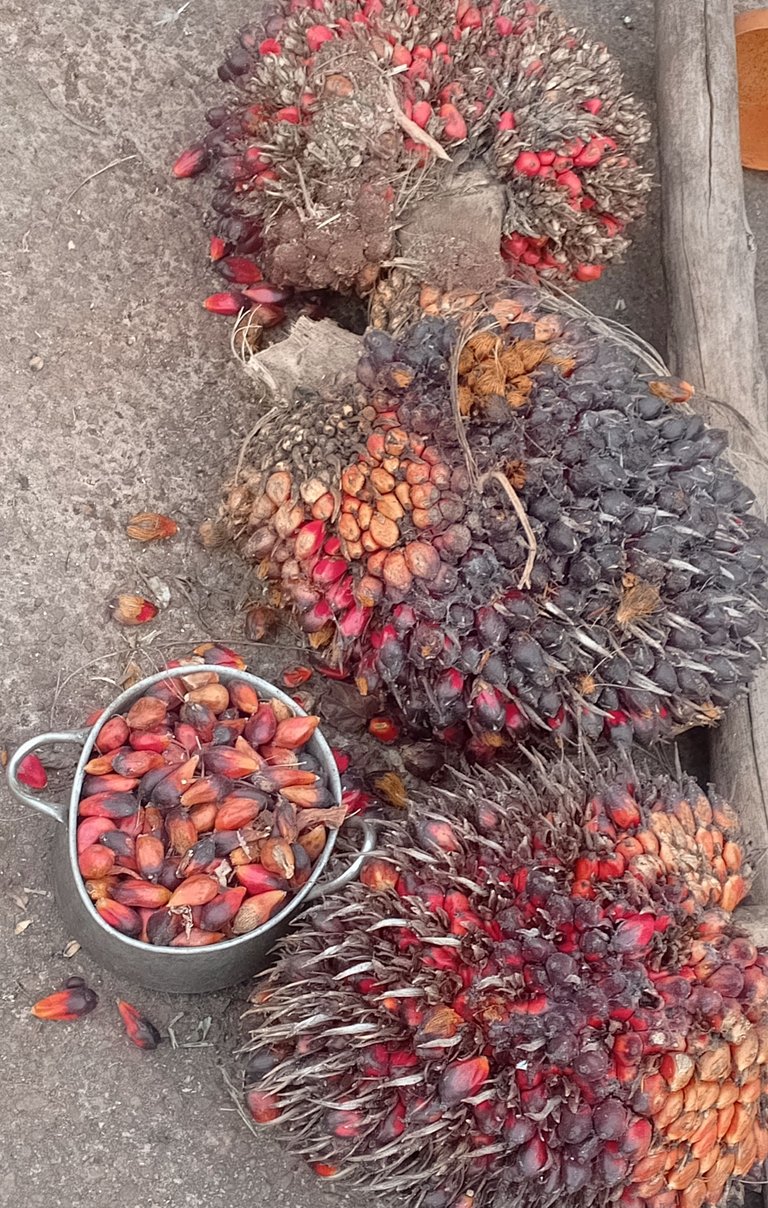
So the above image is the palm fruit; this is how we pluck it from the palm trees after it has ripened.
The next step is to use Cutlass and break the bunch into smaller sizes so it can be easier to remove the palm fruits ready for cooking.
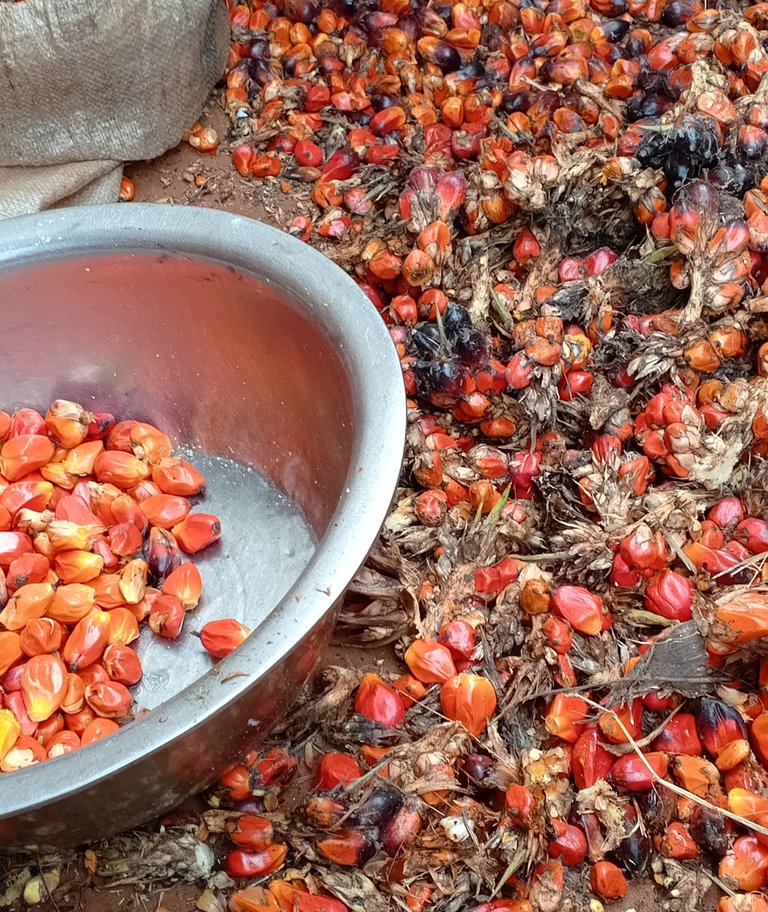
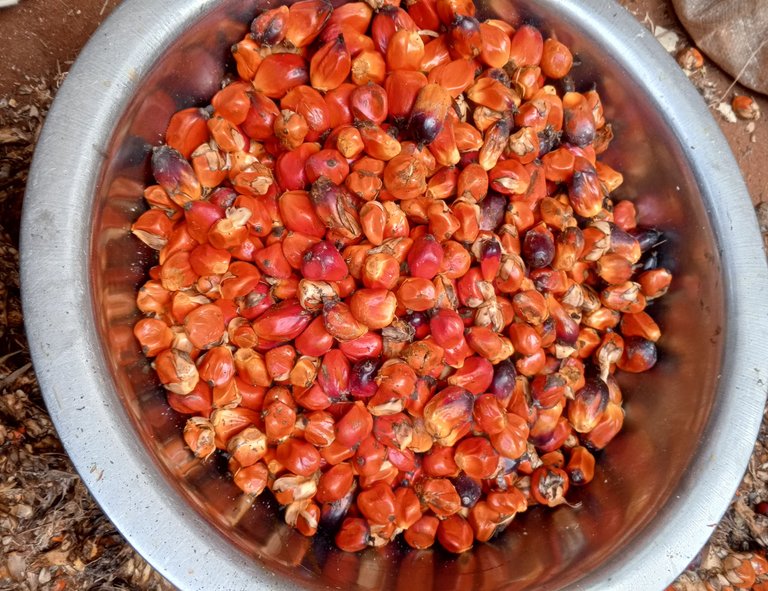
The next stage is the cooking of the palm fruits. This usually takes much time before it gets soft, but there's no hurry; otherwise, you wouldn't get much oil if you cook it half done.
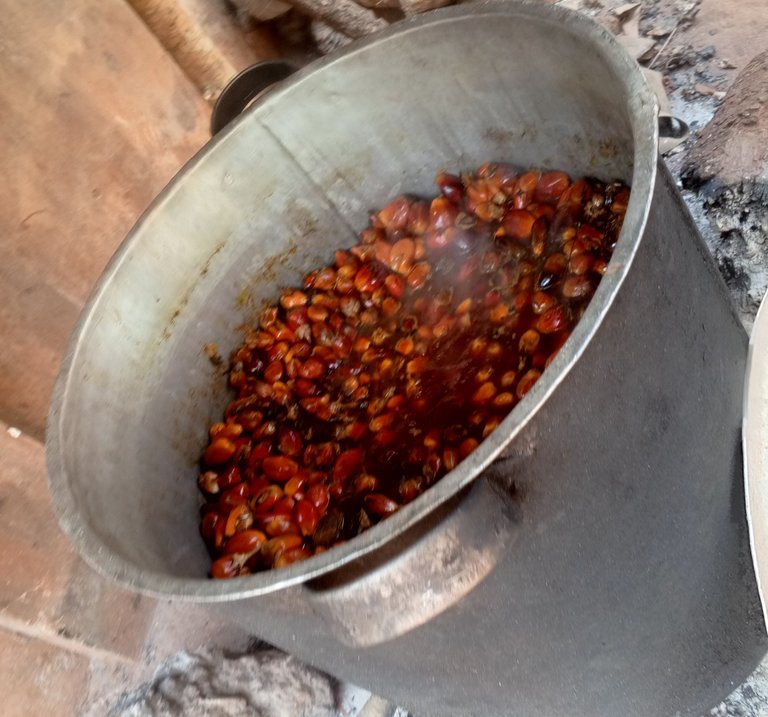
The machine that processes the palm fruits can only give you the best result if you keep the palm fruits as hot as you can. This is why we bagged it inside a big nylon, as you can see below, ready to take it for the processing.
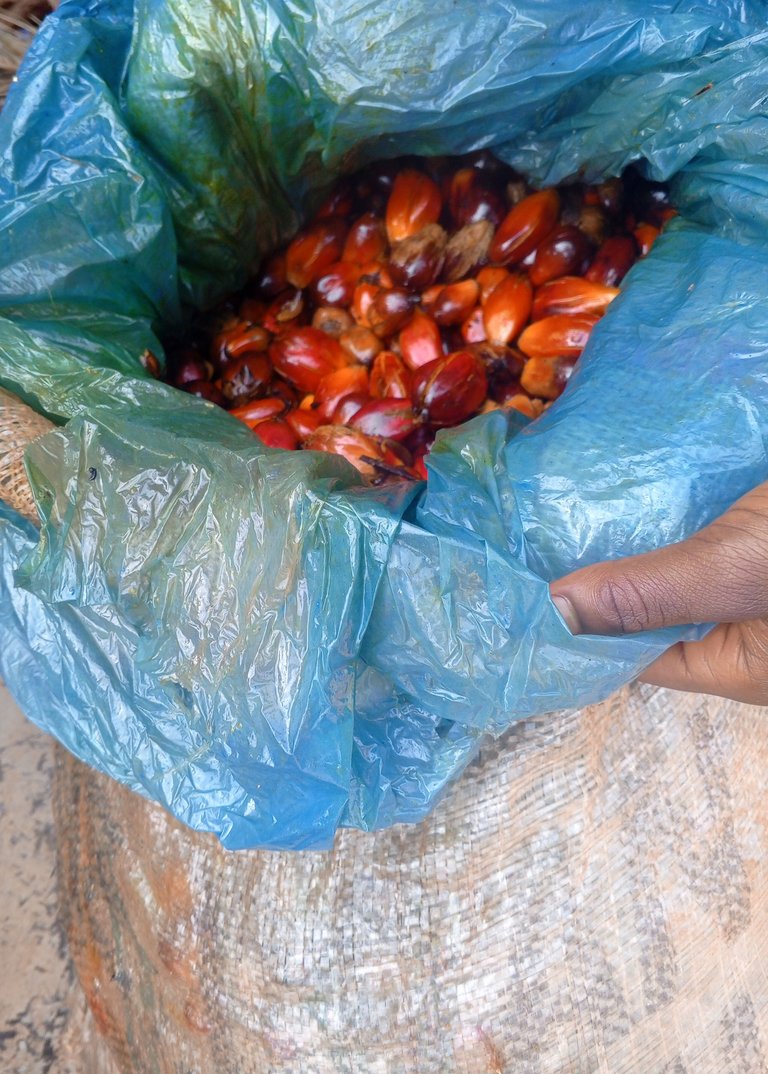
Within a few minutes, the machine blends the palm fruits thoroughly and better than the results we get pounding it with a mortar back then.
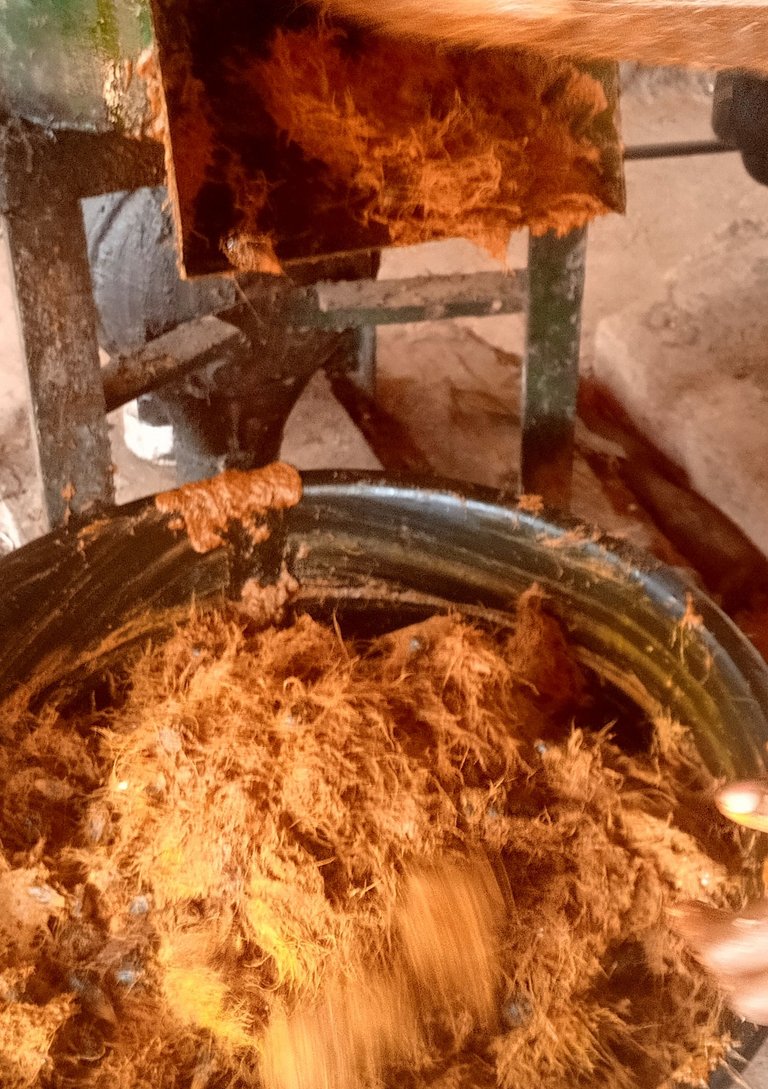
The next stage is separating the oil from the chaff. Good enough; there's a different machine for this step. Back then, we used our hands to do the separation, bending down for hours. Oh no... it was tedious then... lolz.
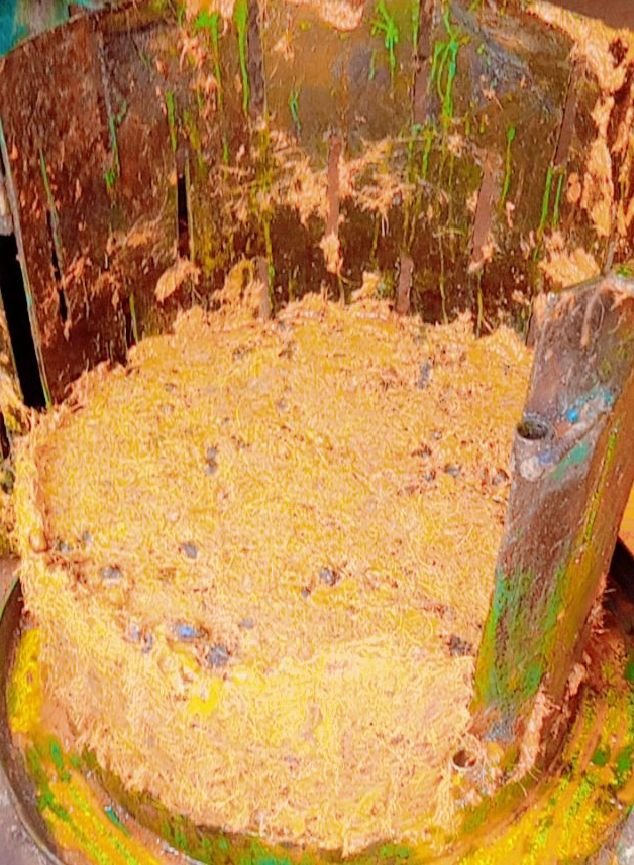
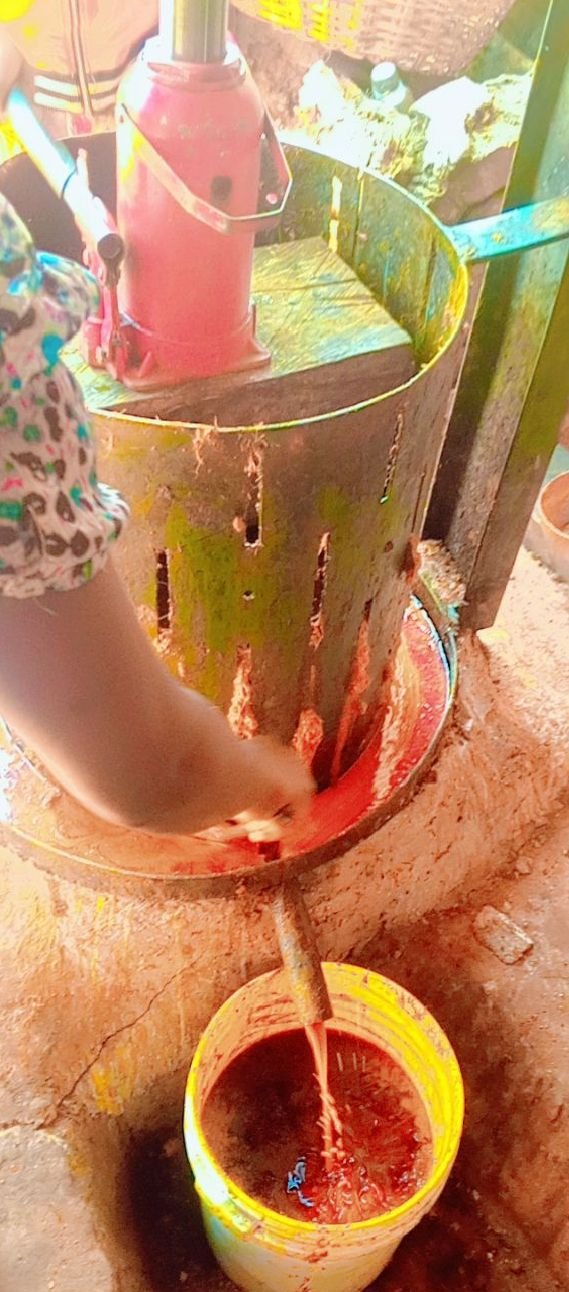
If you watch the images above closely, you notice how the separation is being done, keeping aside the chaff and the oil separately.
The palm oil will further be subjected to heat prior to usage; you don't use it after the separation until it's thoroughly cooked.

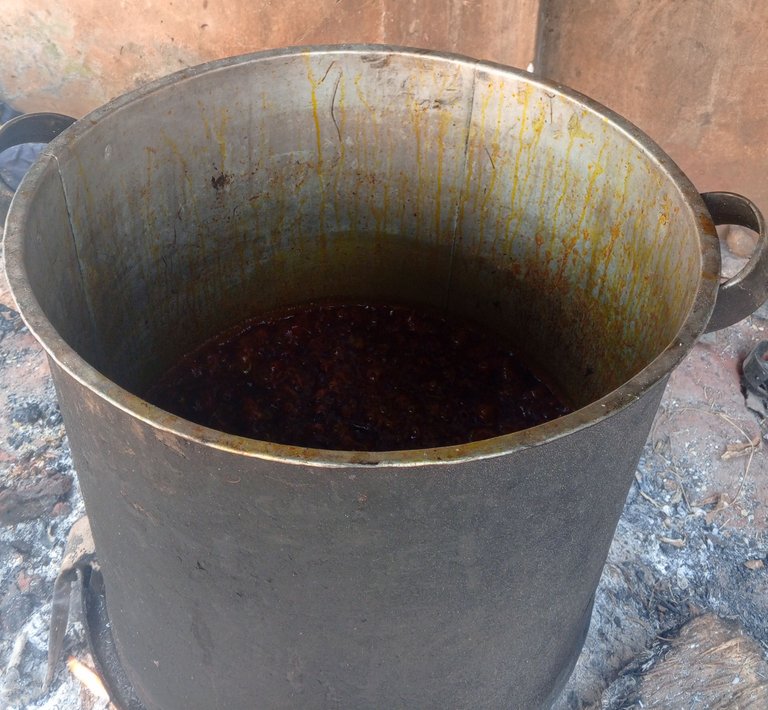
After it's been cooked very well, the oil is allowed to cool down, then you carefully seive it inside a bowl and then transfer it to any container available, ready for use.
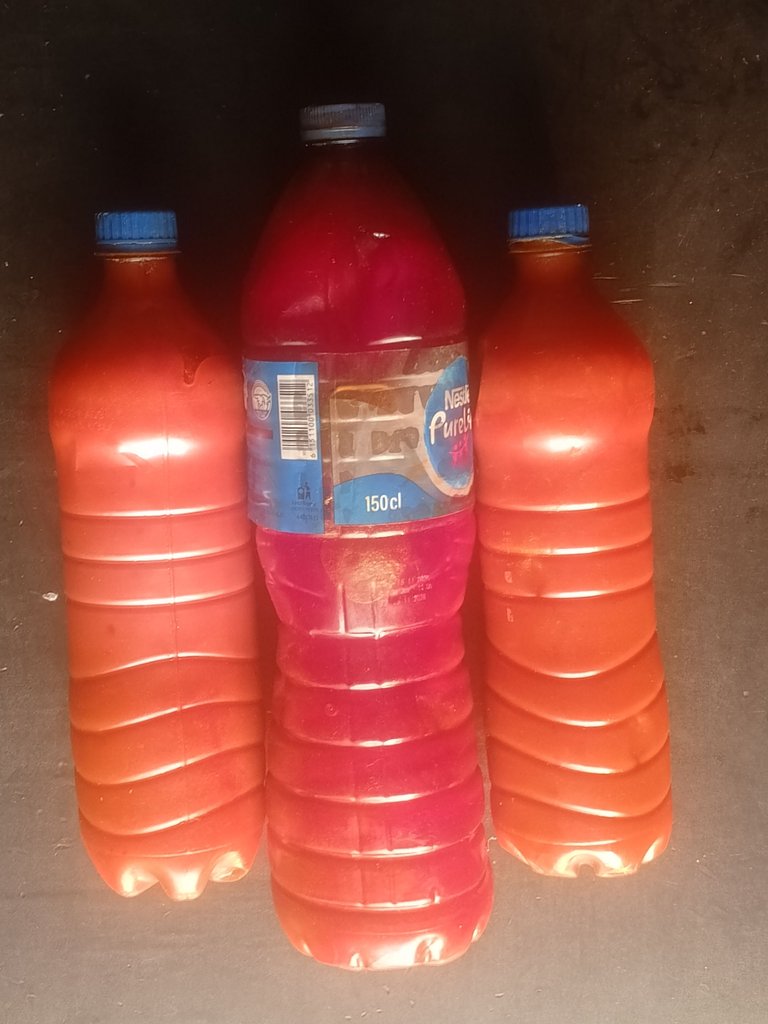
These are the processes required to process palm oil. It's actually a simple procedure that doesn't take more than an hour to finish up ever since technology came into play regarding this home chore.
I always like to have homemade oil instead of buying it from the market, so my visit to my hometown gave me the opportunity to process it myself and take some back to Lagos City, where I reside.
There's hardly a month without my family processing this palm oil, and mostly for home use and not commercial purposes.
Thanks for reading through


